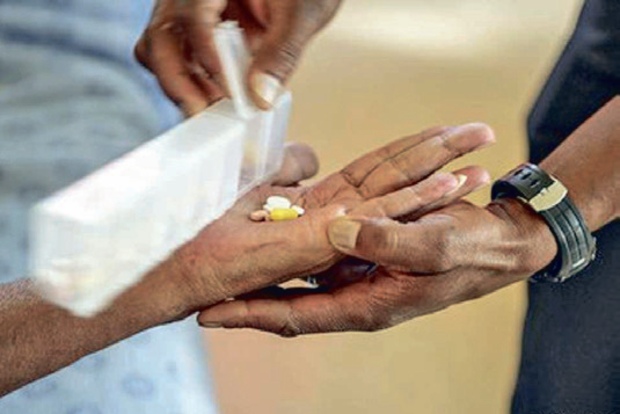Begin typing your search...
Fight against tuberculosis: Prioritising COVID slows fight against TB
About one-quarter of the world’s population is estimated to be infected with TB bacteria, according to the WHO, and only 5% to 15% of these people develop active TB disease.

Chennai
In 2010, Phumeza Tisile, then a first-year student at Cape Town University in South Africa, noticed that she couldn’t climb the stairs easily like other students. She would become tired quickly and had lost a lot of weight. “That’s when I saw that there was something wrong,” Tisile told DW. “But I never thought that it might be TB.” After other diseases were ruled out, a chest X-ray revealed that Tisile did have tuberculosis (TB), and her journey to recovery — a feat that would take three years and eight months — began. Despite being a preventable and curable disease, TB killed 1.4 million people in 2019, according to the World Health Organization (WHO), making it the world’s most infectious disease killer, ahead of both HIV and malaria.
About half of all people with TB can be found in eight countries in the Global South, but TB cases still occur in most countries.
On March 4, 2021, the German city of Krefeld announced that a 17-year-old student had died from TB. In 2019, there were 4,791 cases of TB in Germany and 129 people died from the disease, according to the Robert Koch Institute, a Germany government agency responsible for disease control and prevention. TB is caused by the bacteria Mycobacterium tuberculosis and usually affects the lungs, but it can be located in other parts of the body, too. It is spread through the air when people with active TB in their lungs cough, sneeze or spit. It is not spread by sharing eating utensils, shaking hands, hugging, touching bed linen or toilet seats, sex, or sharing saliva when kissing someone. Symptoms include a cough, chest pain, fatigue, fever and weight loss.
Close or long-term contact is usually required for someone to become infected. About one-quarter of the world’s population is estimated to be infected with TB bacteria, according to the WHO, and only 5% to 15% of these people develop active TB disease. Most people who have had treatment for a few weeks are no longer contagious.
Overcrowded homes and spaces, malnutrition, HIV, substance abuse and diabetes are some of the risk factors for TB. People can also have a latent TB infection that might become active even years later when their immune system is weak. Though scientists have worked around the clock to develop vaccines for Sars-CoV-2, there is only one effective vaccine for TB, Bacille Calmette-Guerin (BCG). It was first tested on humans in 1921. The BCG vaccine is quite effective in children but doesn’t work very well for adults.
Scientists recently developed another vaccine based on BCG. Once the vaccine has successfully completed clinical testing, there are plans to use it against tuberculosis worldwide within the next few years. An estimated 1.4 million fewer people received care for TB in 2020 than in 2019, the WHO announced on Tuesday, citing preliminary data from more than 80 countries.
The countries with the biggest relative gaps were Indonesia (42% fewer TB patients received care), South Africa (41%), the Philippines (37%) and India (25%). The WHO said that it feared more than half a million more people may have died from TB in 2020 because they were unable to obtain a diagnosis. WHO Director-General Tedros Adhanom Ghebreyesus said that the effects of COVID-19 go far beyond the death and disease caused by the virus itself. “The disruption to essential services for people with TB is just one tragic example of the ways the pandemic is disproportionately affecting some of the world’s poorest people, who were already at higher risk for TB,” Ghebreyesus said. Earlier in March, Stop TB Partnership, a group of organisations working to end TB, published research that stated 12 months of COVID had erased 12 years of progress in the fight against TB. Data emerging from India and South Africa also shows that people coinfected with TB and COVID-19 have a mortality rate that is three times higher than for people infected with TB alone, the organization said.
This article was provided by Deutsche Welle
Visit news.dtnext.in to explore our interactive epaper!
Download the DT Next app for more exciting features!
Click here for iOS
Click here for Android
Next Story



